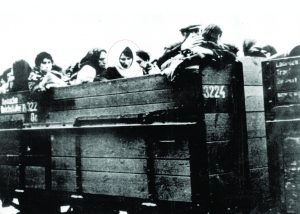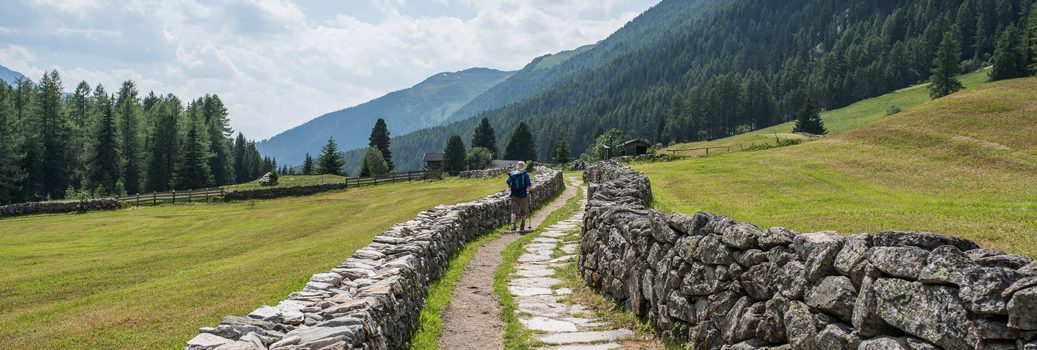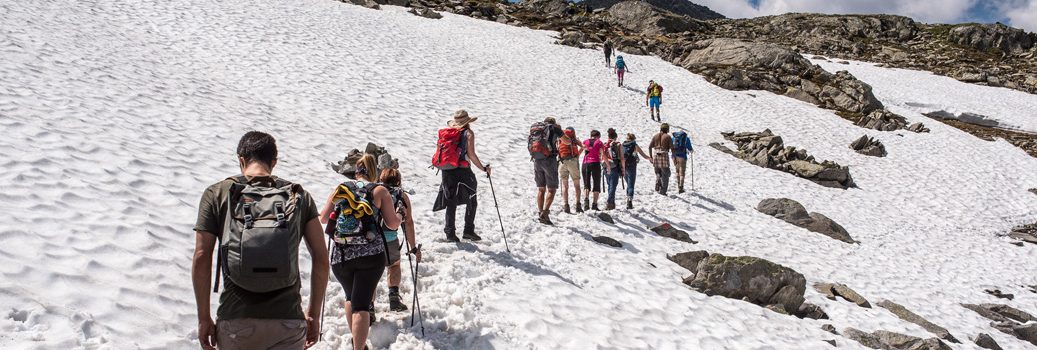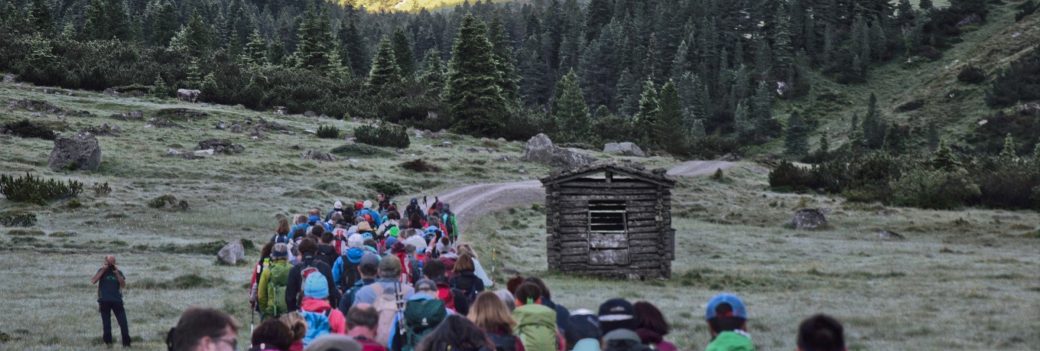Hanna Weiss is the daughter of Holocaust survivors, born on 19th September, 1946 in the DP camp Deggendorf, Germany. Her parents did not tell her much about what had happened to them during and after the war. In the last ten years she started to fill in the gaps herself. She read many books and documents and also got further information from people involved in organizations like the Bricha or the Cyprus Organization. Today she is an active member of these organizations.
An overview of a family’s lengthy journey to safety by Hanna Weiss
My mother Pola was born to the Klot family in Vilnius (Vilna), then part of Poland, on 25th December, 1925. As far as I know they were modern religious Jews, her father Gedaliah was a grain merchant and her mother Rachel (born to the Slavin family in a nearby village of Prazaroki) was a housewife. My mother attended a private Jewish school and studied Hebrew and Yiddish. She also specialized in hand-knitting machines.
Life during World War II
When Vilnius was occupied by the Germans in June 1941, they were confined in the ghetto. Gedaliah worked with Polish friends who had a coal business. This way he could leave the ghetto and pass on information to Jewish partisans who had escaped the ghetto. According to a testimony given by a friend who had been there with them, the Klot family gave shelter and food to 15 other people in their apartment. They all huddled together in very harsh conditions. When the Germans liquidated the ghetto they were all captured and sent to various labor or concentration camps. At the gate of the ghetto, my mother was separated from her mother Rachel. She was probably murdered in Ponar and buried in a mass grave. Later, a picture of Rachel and other Jews being transported in a cattle wagon on the way to extermination was published. This is the only picture we have of Grandma Rachel Klot. This picture was previously displayed at Yad Vashem and is now on display in the Holocaust Museum at Kibbutz Yad Mordechai.

Rachel Klot and other Jews in a cattle wagon
My mother Pola and her father were sent to the Stutthof concentration camp, just as were the rest of the Jews in Vilnius. Only very few survived. Her father Gedaliah did not survive. In the winter of 1945, my mother, together with other Jews in the camp, set out on a Death March headed towards Germany. In this harsh winter, from January to the end of March, they walked in deep snow, without food or proper clothing. One night, towards the end of the war, when my mother and the others slept in a barn in one of the villages, the German soldiers fled in fear of the upcoming Red Army soldiers. Just before they fled, they set the barn on fire. My mother managed to crawl out and save a friend from the fire. They were liberated. The survivors had typhoid, fever and other illnesses and were sent to a hospital.

Hanna Weiss with the Austrian president Alexander Van der Bellen at the 2017 APC
Life at Deggendorf DP camp
After her recovery, my mother came to the Deggendorf DP (Displaced Persons) camp, where she met my father David Wurzberg, who was born in Krakow, Poland. He was in various camps and managed to escape, afterwards wandering through Poland without being caught because he looked like a Pole, light skin and hair tone.
In Deggendorf my parents married and I was born there in 1946. They lived in the main building of the barracks. Thanks to my friend Anna Andlauer, whom I got to know at an APC event in Krimml, I was able to visit the place with her, her husband and the city’s historian. That visit allowed me to see how my parents lived there. The people in the camp lived a very rich life, they created a theatre, wrote and edited newspapers and played a lot of music. They had schools for the children and classes for professional education, such as carpenters, nurses and teachers to prepare them for their future life in the Land of Israel. The DP camp, along with other DP camps, had a baby boom – many of the survivors started new families and by that they declared their personal and national victory over the Nazis. The camp was run by the American army and the JDC (Jewish Distribution Committee) was responsible for the everyday life of the camp. The city archives confirmed that my parents were registered in the camp and received food stamps until May 1947. Together with their friends, the group left the camp with the Bricha. My mother recounted that along the way they were occasionally accompanied by people who filmed and documented them. Today I know that it was the producer Meir Levin and his staff who created the movie The Illegals.
Many of the survivors started new families and thereby declared their victory over the Nazis.
The people in the group wandered together from place to place, passing Vienna, from where they continued with the Bricha. From the stories I heard and from what I have seen in the film, the difficult roads did not undermine the desire to continue and to arrive at the Land of Israel.
Crossing the Krimmler Tauern
One night they came close to the Krimml Waterfalls and from there, their march began. They had little baggage on their back and no proper clothes to cross the Alps. They also carried me, the baby. They walked all night to rest at family Geisler’s Krimmler Tauernhaus. My mother told me how hard it was for her to walk especially in the snow. It reminded her of the Death March. This is my family story in the Krimml Pass.
In the documents I discovered that we arrived in Italy on 30th August,1947. This is the final confirmation that we passed Krimml because the survivors could cross the Krimmler Tauern only in the spring and summer months. In winter, there was too much snow to take this route. After the registration in Milan, we were sent south to a DP camp very close to Bari. There my mother was reunited with her only sister Cila, whom their parents had managed to smuggle to a youth camp in the Soviet Union before the beginning of the war in order to protect her from the Nazis. The two sisters were overjoyed to finally meet again. Both women were now married and had a child of exactly the same age.
Last part of the journey
After a long wait of about two and a half months, the two families and a group of people boarded the ship The Unafraid. Meir Levin continued to film throughout the entire cruise that lasted two weeks. In December, it arrived in Haifa where it was captured by British Military. From there, all the ship’s people were transferred to the detention camps in Cyprus. There we lived in tents in Camp 65. Life in the camp in the middle of winter was difficult – several families lived in one big tent, there was no privacy, no proper place to cook or live a normal life. The camps were surrounded by barbed wire fences, which reminded the survivors of the concentration camps. After a few months in the camps, many babies got sick and the young families were permitted to sail back to Haifa.

Hanna Weiss and her mother on board of the ship The Unafraid
Life in Israel
My parents went on to build a new life with their friends with whom they often talked about their past in the concentration camps and the ghetto. They remained a close group of friends. Over the years, everyone passed away. As a child and a young woman, I studied, was active in the Scouts and served in the army. I continued my studies and became an elementary school teacher. Later, I became headmistress. I married Gershon, who survived the Terezin Camp as a one-year-old baby with his mother. He was an officer in the army. We have two lovely children. We were sent by the Jewish Agency to work with the Jewish Community in Switzerland, Zurich and we had the privilege of being among the first to build a new township in Israel, Kochav Yair, where we live to this very day.
Information on the author: Hanna is actively involved in remembrance work and edited two books which are a collection of 140 memoires told by sons and daughters of Holocaust survivors who were in detention camps in Cyprus from 1946 to 1949.








